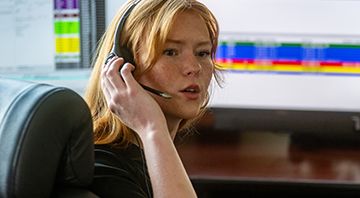Why fire and rescue response times are increasing - and how you can manage them
Why fire and rescue response times are increasing

The average emergency response time for the Fire and Rescue Service (FRS) is currently at its highest reported level since records began - nine minutes and 13 seconds. This dramatic increase can be attributed to ongoing budget cuts, which have impacted both the number of on-call firefighters and Control Room Operators (CROs). Concurrently, increasing global temperatures have created more major incidents for firefighters to attend, giving rise to higher call volumes.
The part of today’s fire and rescue control room technology
However, there is another often overlooked factor which significantly affects response times - control room software. For one FRS, an inspection by His Majesty’s Inspectorate of Constabulary and Fire & Rescue Services (HMICFRS) identified a cause for concern which was directly attributed to their call-handling software. Their system was said to lack the ability to “gather and record relevant and up-to-date risk information” as well as being prone to failure and crashes during emergency calls, resulting in “the public receiving a slower response to emergencies”.
Control room software is often not built intuitively. It’s frequently housed in numerous disparate systems, creating silos of information which are difficult to integrate - an issue which is exacerbated by the amount of information a CRO is expected to manage.
Emergency requests are no longer limited to phone calls, they can arrive through text messages, emails and social media messages. A single incident can also produce a mass of information - such as photos, videos and social media posts. Attempting to manage these multiple channels can cause delays to response times for emergency services and mean vital pieces of information are missed - risking the safety of firefighters and those they are attending to.
The impact on control room operators
Without the capabilities to automate intelligence and processes, the control room software forces CROs - who are already under significant time pressure - to manually receive and analyse information as it arrives. Overall, the current technology is failing to support a CRO’s duties effectively.
These challenging working conditions have serious implications for CROs. Stress, anxiety and ultimately, burnout are prevalent amongst them, causing absenteeism and further reducing staff numbers. The nature of such a demanding role means that it can take at least a year to sufficiently train an FRS call handler. Yet the intense working conditions mean many leave soon after training is complete. This has made both retention and the costs incurred by an ongoing training cycle another pressing issue for the FRS.
Influenced by other industries that have moved working practices away from offices, allowing staff to work remotely, FRS staff are asking for more flexibility. However, as it stands, the existing technology is unscalable and would fail to accommodate remote working practices. For those CROs experiencing high-pressure working conditions, a less demanding customer-facing role which affords more flexibility can be more appealing - further impacting retention.
Facing this intensive combination of challenges which show no signs of abating, the FRS urgently requires a solution which can meet their deficiencies head-on. They need a highly developed control room software that supports both incident response and call handler welfare, yet works within their limited budgets.
Managing multiple issues with an advanced control room software

At Motorola Solutions we create products powered by human-centred design principles. They’re built to prioritise the demands of our customers: the way they work, their expectations and their needs. From streamlining workflows which accelerate communication, to facilitating secure access from a remote location, our intuitive control room software technology can make an impact on the FRS in multiple ways.
Our fire control room solution connects call handling and radio dispatch, Computer Aided Dispatch (CAD) and incident management software. When designing this solution, our priority was to improve the average response time for emergency services. The control room software sits in one advanced ecosystem, facilitating multiple streams of information - voice, video, data and analytics. All information is digitised and freed from silos. Manual processes are removed, and critical, time-sensitive details flow faster - presenting fewer opportunities for human error. CROs can provide on-call teams with a comprehensive package of information before they reach an incident, improving safety, situational awareness and reducing response times.
Cloud-hosted, the control room software can be accessed through a web browser using a secure connection, allowing CROs to experience flexible working conditions. What’s more, should a major event occur, the virtual technology can be easily scaled, expanding the reach of those working with the systems, as well as employing mutual aid through the Motorola Solutions Hub concept - crucial when meeting an increased demand for services.
Built on Evergreen technology, the FRS will no longer need to invest in multiple individual services, as it automatically renews with the latest features and security updates. Offered on a Software as a Service (SaaS) basis, any upfront expenditure and maintenance costs are significantly lower than they would be when buying an on-premise solution.
A solution this intuitive relieves the CRO of some of the pressure the role entails. This positively impacts staff retention, contributing to the better handling of calls and reducing costly training for new team members. Ultimately, our control room software decreases incident response times for the fire department. At Motorola Solutions, we're committed to creating safer communities and safer businesses. We believe technology like this plays a crucial role in achieving that goal.
